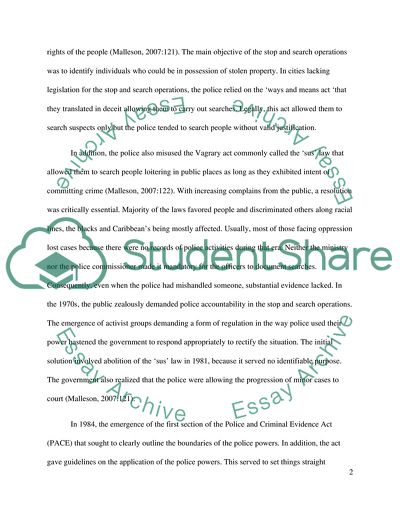Cite this document
(The Effects of Police and Criminal Evidence Act in English Policing Literature review, n.d.)
The Effects of Police and Criminal Evidence Act in English Policing Literature review. https://studentshare.org/law/1789070-pace-was-a-watershed-in-english-policing-explain-why-it-was-brought-in-its-key-features-and-how-it-has-been-amended-since-being-passed
The Effects of Police and Criminal Evidence Act in English Policing Literature review. https://studentshare.org/law/1789070-pace-was-a-watershed-in-english-policing-explain-why-it-was-brought-in-its-key-features-and-how-it-has-been-amended-since-being-passed
(The Effects of Police and Criminal Evidence Act in English Policing Literature Review)
The Effects of Police and Criminal Evidence Act in English Policing Literature Review. https://studentshare.org/law/1789070-pace-was-a-watershed-in-english-policing-explain-why-it-was-brought-in-its-key-features-and-how-it-has-been-amended-since-being-passed.
The Effects of Police and Criminal Evidence Act in English Policing Literature Review. https://studentshare.org/law/1789070-pace-was-a-watershed-in-english-policing-explain-why-it-was-brought-in-its-key-features-and-how-it-has-been-amended-since-being-passed.
“The Effects of Police and Criminal Evidence Act in English Policing Literature Review”. https://studentshare.org/law/1789070-pace-was-a-watershed-in-english-policing-explain-why-it-was-brought-in-its-key-features-and-how-it-has-been-amended-since-being-passed.


